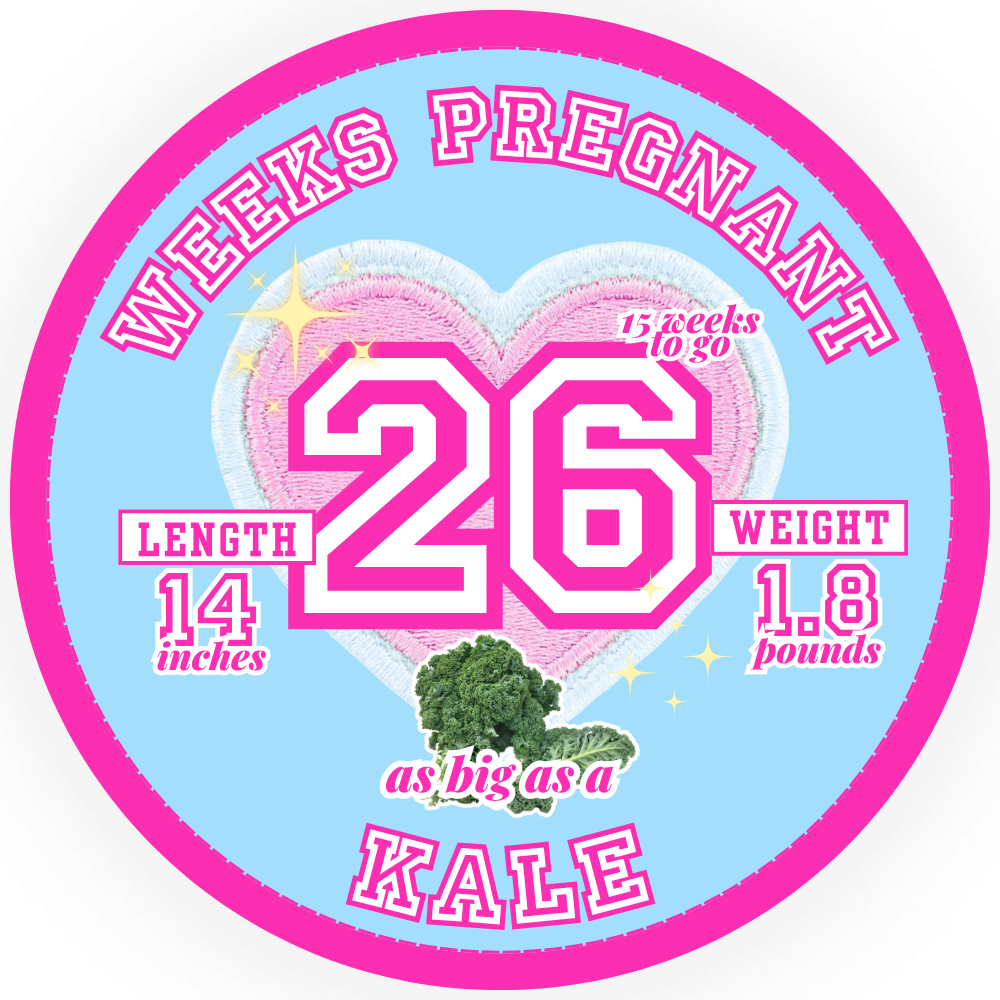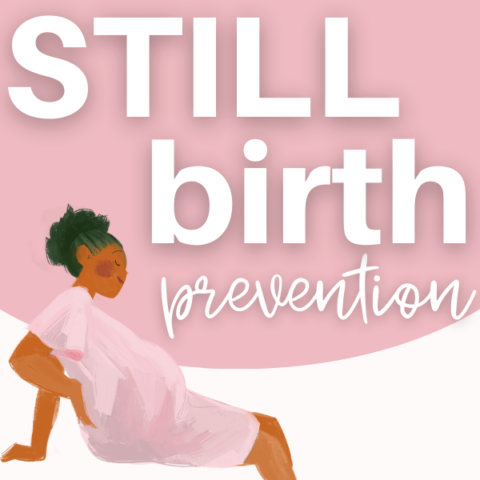
Baby’s growth and size
At 26 weeks baby is around 14 inches in length and anywhere from 1.7 – 2 pounds.
What’s new developmentally?
Baby’s eyes begin to open this week! They have been closed for the past few months to allow the retina to fully develop and mature, but now it’s time!
Baby might even respond to light so try shining a flashlight at your belly and seeing if you get a little kick or nudge in response. The iris, the colored part of the eye, still lacks pigmentation so it’s too early to determine what color eyes your baby will have.
Baby’s lungs continue to produce surfactant, the substance necessary to help keep the lungs inflated. Baby is also inhaling and exhaling small amounts of amniotic fluid – something essential for lung development.
Fun facts about your week 26 baby
- If you are expecting a boy, his testicles have started descending into his scrotum
- Can see, hear, and taste
- Baby’s eyebrows and eyelashes are visible
26 weeks pregnant baby position
Curious what position your little one is in right now? Have you ever heard of something called belly mapping? It’s a great tool that mamas can use at home to help determine the position their baby is in.
An estimated 75% of babies will be head down before 28 weeks and a whopping 90% by 32 weeks. By the time you are full term, there’s a 97% chance your baby will be head down. So, what does this mean for you at 26 weeks?
This means that if your baby hasn’t assumed a head down, also known as vertex, position, then there’s absolutely nothing to worry about. Baby still has plenty of time to move and flip around.
If you are curious to learn more about belly mapping and things you can do if baby isn’t in an optimal position for birth, make sure to look at this article.
26 weeks pregnant itchy hands and feet
If you are experiencing itchy hands and feet during pregnancy, it is always a good idea to bring it up with your OB provider. Itchy hands and feet in pregnancy can be a symptom of a pretty scary condition known as intrahepatic cholestasis of pregnancy (ICP), or simply cholestasis.
Most commonly the itching is in the palms of your hands and your feet, but it doesn’t have to be isolated to these two areas. If you experience any kind of itching during pregnancy, it is definitely worth bringing up. Cholestasis is a condition in which the normal flow of bile is affected by the increased amounts of pregnancy hormones.
It is more common in the third trimester when hormones are at their peak, but it can occur late in the second trimester too. Cholestasis can increase the risks for fetal distress, preterm birth, and stillbirth.
This is not to scare you, most women with cholestasis go on to have perfectly healthy babies. If you do experience itching during pregnancy, be sure to speak up and advocate for yourself and baby.
It can be diagnosed with blood work and a plan should be developed from there.

.png?width=1500&height=300&name=logo%201500x300%20(1).png)


